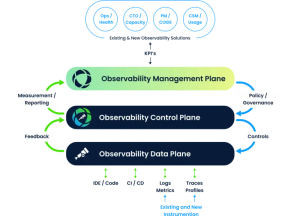Instagram moves 20 billion images to Facebook servers
![]() Instagram announced last week that it’s picked up its billions of images stored in Amazon Web Services (AWS) and dumped them into Facebook’s own servers in one of the largest data migration operations ever undertaken.
Instagram announced last week that it’s picked up its billions of images stored in Amazon Web Services (AWS) and dumped them into Facebook’s own servers in one of the largest data migration operations ever undertaken.
News of the move came from this interview with Facebook infrastructure engineer and Open Compute Foundation program developer Charlie Manese. Manese revealed that the massive migration took about a year to organize and an additional month to carry out. As a result of moving onto Facebook’s infrastructure, Instagram now uses about a third fewer servers, something that significantly reduces its operating costs, Manese notes.
Wired later posted an in-depth article on the transition – which has been called the “Instagration” within company circles – and notes that it was unlike any other. With previous migrations – such as with FriendFeeed – Facebook was able to shut the service down before shifting all of its data into its own shop. But Instagram is vastly larger and still growing rapidly. The operation involved shifting images from thousands of virtual machines in AWS’s cloud infrastructure to Facebook’s private data centers without disrupting service.
Being on Facebook’s own infrastructure not only saves operational costs but means that Instagram can now take advantage of Facebook’s advertising and analysis tools. That could mean more advertising in the future. Instagram can also benefit from dozens of other tools Facebook has built, such as its spam blocking software.
The sheer complexity of this migration also illustrates how companies can make huge gains in efficiency when they build their own infrastructure – just like Facebook has with its open-source, Open Compute data centers. Facebook’s own data centers run 38 percent more efficiently and are 24 percent less expensive than the average data center, according to the Open Compute website.
photo credit: Elizabeth Haslam via photopin cc
A message from John Furrier, co-founder of SiliconANGLE:
Your vote of support is important to us and it helps us keep the content FREE.
One click below supports our mission to provide free, deep, and relevant content.
Join our community on YouTube
Join the community that includes more than 15,000 #CubeAlumni experts, including Amazon.com CEO Andy Jassy, Dell Technologies founder and CEO Michael Dell, Intel CEO Pat Gelsinger, and many more luminaries and experts.
THANK YOU













